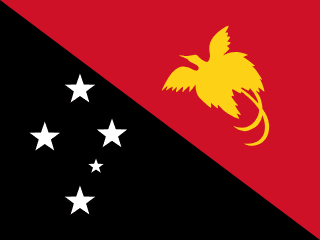Discover everything you need to know about navigation and maritime operations in Papua New Guinea. This comprehensive guide covers its maritime conditions, coastal geography, key ports, as well as port regulations and infrastructure. Papua New Guinea, located in the South Pacific Ocean, has an extensive coastline and a great diversity of marine ecosystems, making it a strategic area for maritime trade and naval operations. This country offers unique prospects for the maritime industry with its numerous natural ports and abundant marine resources. This guide is essential for maritime industry professionals and vessels calling at this part of the world.

Explore the strategic ports and maritime infrastructure of papua_new_guinea

Essential maritime information about Bialla Port port for sea professionals

Essential maritime information about Kimbe Port port for sea professionals

Essential maritime information about Kieta Port port for sea professionals

Essential maritime information about Aitape Port port for sea professionals

Essential maritime information about Alotau Port port for sea professionals

Essential maritime information about Buka Port port for sea professionals

Essential maritime information about Daru Port port for sea professionals

Essential maritime information about Lorengau Port port for sea professionals

Essential maritime information about Kumul Marine Terminal Port port for sea professionals

Essential maritime information about Samarai Port port for sea professionals

Essential maritime information about Vanimo Port port for sea professionals

Essential maritime information about Rabaul Port port for sea professionals

Essential maritime information about Anewa Bay Port port for sea professionals

Essential maritime information about Oro Bay Port port for sea professionals

Essential maritime information about Port Moresby port for sea professionals

Essential maritime information about Lae Port port for sea professionals

Essential maritime information about Kavieng Port port for sea professionals

Essential maritime information about Wewak Port port for sea professionals

Essential maritime information about Madang Port port for sea professionals
Explore the strategic ports and maritime infrastructure of papua new guinea
Papua New Guinea, located in the South Pacific Ocean, stretches along a vast coastal area of over 17,000 kilometers. This island country includes the eastern part of New Guinea Island as well as several surrounding islands. The maritime geography of Papua New Guinea is very diverse, comprising deep bays, extensive coral reefs, lagoons, and natural channels that facilitate navigation and access to natural ports. The maritime environment is also characterized by great biodiversity, with rich marine ecosystems attracting attention for both their ecological and economic value. This coastal and maritime diversity creates varied conditions for naval and commercial activities, impacting navigation routes, maritime safety, and port infrastructure maintenance.
The coastal areas are subject to tropical weather conditions, with monsoon seasons affecting the sea and navigation. Strong winds and rain can limit seasonal maritime operations, requiring particular attention from navigators and port operators. Furthermore, the ocean currents in this region, combined with reefs and seabeds, can pose challenges for ship maneuverability, recommending careful use of nautical charts and modern navigation instruments. The maritime authorities of Papua New Guinea work in collaboration with international organizations to ensure the safety and protection of these biodiversity-rich seas.
Papua New Guinea has several strategic seaports that play a key role in the country's economy and international trade. The ports of Port Moresby, Lae, and Rabaul are the most important in terms of maritime traffic and capacity to host different types of vessels. Port Moresby, as the capital and main commercial port, has modern facilities for cargo and passengers, offering essential services for regional and international maritime transport. Lae is recognized as an important center for goods trade, notably agricultural products and minerals extracted inland, with a dynamic port enabling active exchanges with other economic powers in the Pacific region.
These port infrastructures are supported by developing logistical facilities, including cargo handling, warehouses for storage, as well as services for ship repair and maintenance. Papua New Guinea also focuses on improving environmental standards in its ports to limit the ecological impact of maritime activities, aligning its policies with international conventions. Moreover, local maritime regulations emphasize safety, port traffic management, and control of ship emissions to preserve coastal water quality and support the sustainability of maritime economic activities.